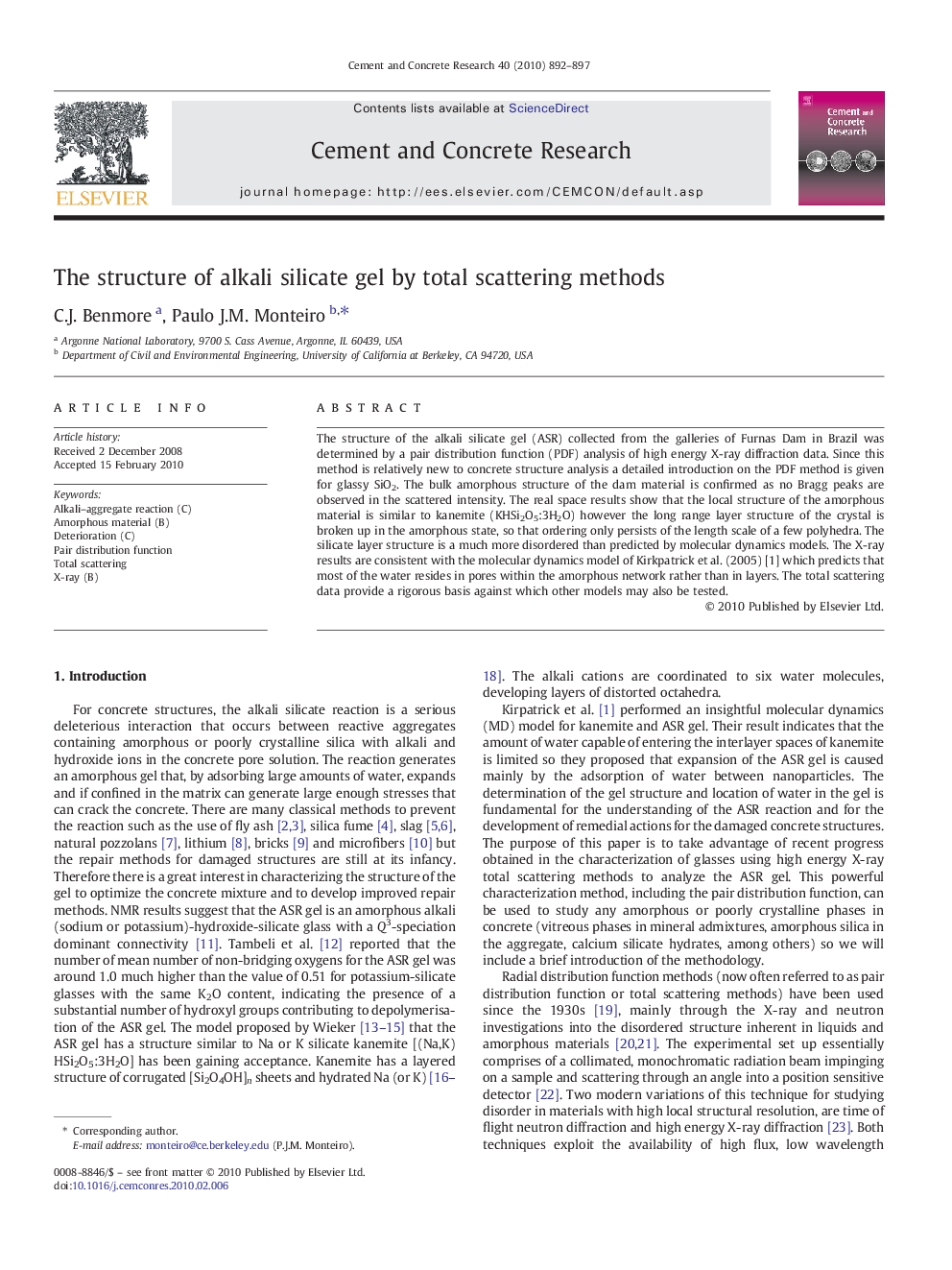| Article ID | Journal | Published Year | Pages | File Type |
|---|---|---|---|---|
| 1456955 | Cement and Concrete Research | 2010 | 6 Pages |
The structure of the alkali silicate gel (ASR) collected from the galleries of Furnas Dam in Brazil was determined by a pair distribution function (PDF) analysis of high energy X-ray diffraction data. Since this method is relatively new to concrete structure analysis a detailed introduction on the PDF method is given for glassy SiO2. The bulk amorphous structure of the dam material is confirmed as no Bragg peaks are observed in the scattered intensity. The real space results show that the local structure of the amorphous material is similar to kanemite (KHSi2O5:3H2O) however the long range layer structure of the crystal is broken up in the amorphous state, so that ordering only persists of the length scale of a few polyhedra. The silicate layer structure is a much more disordered than predicted by molecular dynamics models. The X-ray results are consistent with the molecular dynamics model of Kirkpatrick et al. (2005) [1] which predicts that most of the water resides in pores within the amorphous network rather than in layers. The total scattering data provide a rigorous basis against which other models may also be tested.
